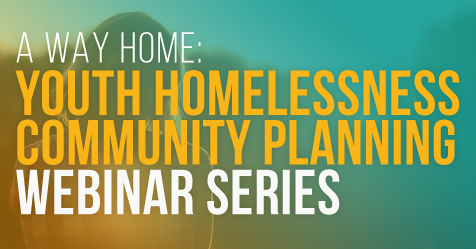Having ‘come from away’ I am under no illusion that Ontario, or Toronto for that matter, is the centre of the universe. That said, I’m pretty excited about working with community and government stakeholders to ramp up our efforts to prevent and end youth homelessness in Ontario. As Dr. Gaetz always says, it’s all about readiness.
So what’s happening in Ontario that makes it ready for a major shift in how we respond to youth homelessness? At this point I have to give a shout out to Alberta as the first province to have a provincial strategy to prevent and end youth homelessness. These efforts to craft and implement the strategy set the stage for critical learnings that are rippling across the country. The plan emphasizes the need for alignment across government programs and systems, and foregrounds prevention. In September 2014, the Ontario government announced its commitment to end homelessness as a part of Ontario’s Poverty Reduction Strategy. In response, the Expert Advisory Panel on Homelessness was established with a mandate to give advice on how to define and measure homelessness in Ontario, how to prioritize and set targets for ending homelessness, and how to build the evidence base and capacity to implement best practices around the province. Based on the recommendations in the resulting report, the Province set four priorities to guide action to prevent, reduce, and end homelessness, focusing on:
- Chronic homelessness
- Youth homelessness
- Aboriginal homelessness
- Homelessness following transition from provincially-funded institutions and service systems
While this was happening, communities across Ontario were recognizing the need to have targeted strategies to prevent and end youth homelessness. Two Ontario communities, Kingston and Wellington County, were part of our national pilot program, Mobilizing Local Capacity to End Youth Homelessness, and actively engaged in the critical work of crafting and implementing these strategies. Other communities and the province took notice. As we officially launched A Way Home, the Government of Ontario supported the development of our Youth Homelessness Community Planning Toolkit, with a Special Appendix for Service Managers in Ontario. This body of work helps communities go further, faster so they can get to the really difficult work of implementation, and outlines the role provincial ministries and Service Managers can play to align their efforts with those of communities. Around the same time we co-released an Ontario Policy Brief with the Canadian Observatory on Homelessness to help inform the provincial strategy moving forward.
Given this momentum, what do we have planned for 2017? With support from the Government of Ontario, we have launched a dedicated Ontario Youth Homelessness Planning Community of Practice that builds on more than a decade of experience in convening the National Learning Community on Youth Homelessness. Free supports available to all communities include a year-long monthly webinar curriculum in partnership with OMSSA and Canadian Observatory on Homelessness to “go deep” on issues of community planning, implementation, change management, prevention and Collective Impact. We have also launched an online forum specific to community planning, moderated by expert planners. The forum is part of the Community Workspace on Homelessness, an online platform for community representatives, service providers and others working in the homelessness sector to collaborate and share information. We’re offering a free community planning newsletter that features critical resources and case studies from across the country to inform your work. We’re also building toward a province-wide Youth Homelessness Community Planning Institute to bring as many as twenty Ontario communities together to kick-start efforts to work across systems to prevent and end youth homelessness.
While these efforts are underway, our team is providing targeted supports to a number of communities that have made headway on the issue. Some communities have even adopted the A Way Home name to highlight that their efforts are part of a broader movement for change. They’re signing on to working across systems through a Collective Impact lens and doing the difficult work of investing in and shifting efforts to prevention. A Way Home Ottawa, A Way Home Lanark County, A Way Home Toronto, and A Way Home Peterborough are just the tip of the iceberg. Positive change is underfoot and it couldn’t come soon enough for young people that deserve the opportunity to achieve their full potential in life.
Stay tuned as we work alongside young people with lived experience, communities, and all orders of government to move the dial on the issue of youth homelessness.
This post is part of a monthly series that follows A Way Home's progress as we create real change on the issue of youth homelessness. On the second Wednesday of every month, join us for an update from A Way Home's Executive Director, Melanie Redman.


